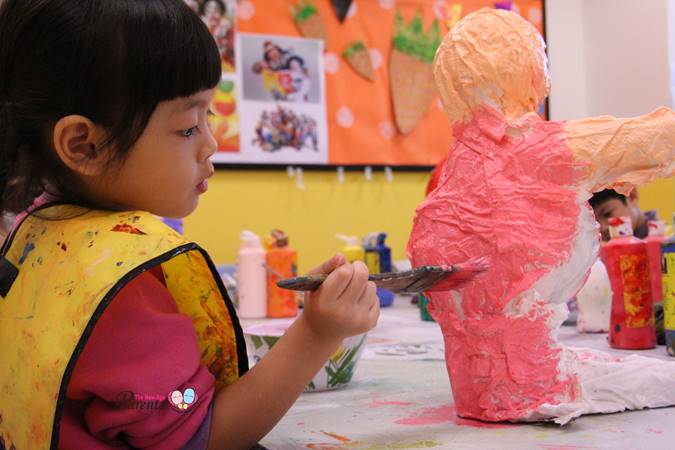Monsters, thunderstorms, strangers, dark rooms and getting lost at the mall. When you’re a young child, it sometimes seems as though the world is full of things designed to scare you. Although parents often worry about their children’s fears, many kids simply outgrow their anxieties. According to the American Academy of Pediatrics, 43% of children have several fears or concerns. As a parent, guiding and supporting your kid increases the likelihood that she will outgrow her fears.

Be Open to Discussing Fears
One of the most important rules when dealing with childhood fears is to take them seriously. Snapping “There’s no such thing as monsters” after your child asks you to check the closet for the fourth time is counterproductive. Instead, avoid trivializing the problem of making your kid feel foolish for his fear, suggests the Mayo Clinic. Asking why your child feels afraid is a great way to start the conversation.
Turn Childhood Anxieties Into a Creative Project
Flipping a common fear on its head is a smart way to show your child it’s nothing to be terrified of. For example, if your kid runs to your bed every time there’s a thunderstorm, create a story or drawing together about Mr. Scary Stormcloud. Ask your child to narrate a story about the storms, which can help you understand her fears and overcome them in a creative, playful way. Another example is to provide coloring sheets or interactive videos.
For example, Kool Smiles offers these for children who are terrified of the dentist. Using children’s vibrant imaginations to your advantage is a great way to open a dialogue about common fears.
Progressive Desensitization
Psychologists often use a technique called desensitization to help clients overcome phobias, according to the Maryland Chapter of the American Academy of Pediatrics. This approach exposes your child to scary events, moving from less scary to more scary occurrences.
For example, a child with a fear of dogs might start by looking at a picture of a dog. Talk about the dog and discuss your child’s feelings. After your child can look at the picture for 5 minutes without feeling afraid, move on to a stuffed animal, followed by being in the presence of a small dog, then touching the dog briefly and finally petting the dog. Move slowly at each stage (the entire process will take several weeks), giving your child a chance to articulate his fears.
Be Cognizant of Reinforcement
Perhaps your child is afraid of the dark. Every time she yells in fear, you come into her bedroom, flip on the lights and soothe her for 10 minutes. Although this may be your natural instinct as a parent, it also reinforces her fear. Every time she feels afraid, you remove the scary event and comfort her, reinforcing the idea that she should be afraid of the dark. Whenever possible, avoid reinforcing childhood fears. Begin by entering the room and talking to your child, but leaving the lights off. This helps your kid learn that the darkness doesn’t have to be scary.
Related reads:
– Understanding Nightmares And Night Terrors In Toddlers And Children
– 9 Ways To Help Your Child Cope With Separation Anxiety
– Understanding Your Toddlers’ Fears
* * * * *
Like what you see here? Get parenting tips and stories straight to your inbox! Join our mailing list here.
Want to be heard 👂 and seen 👀 by over 100,000 parents in Singapore? We can help! Leave your contact here and we’ll be in touch.




























































Leave a Comment: